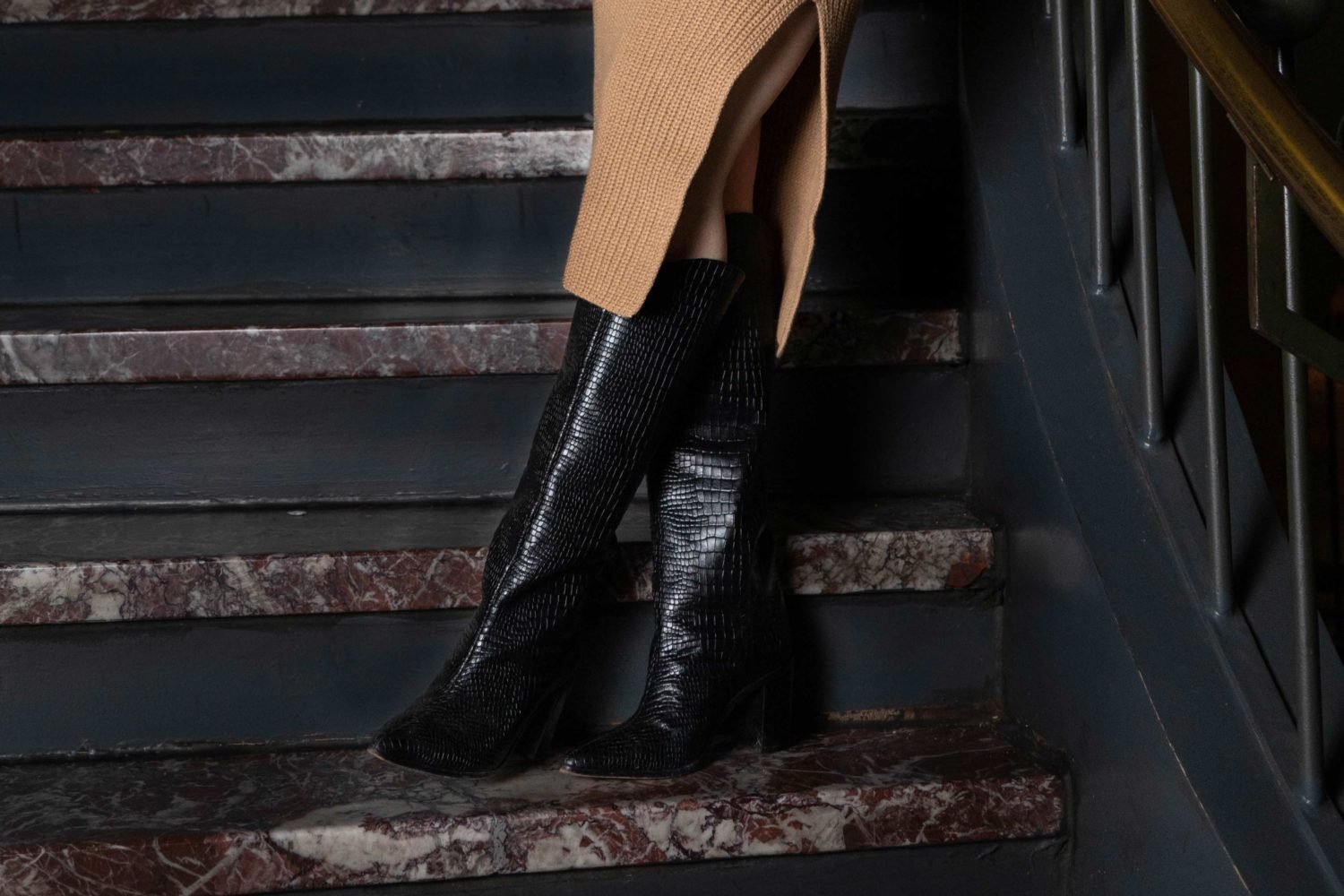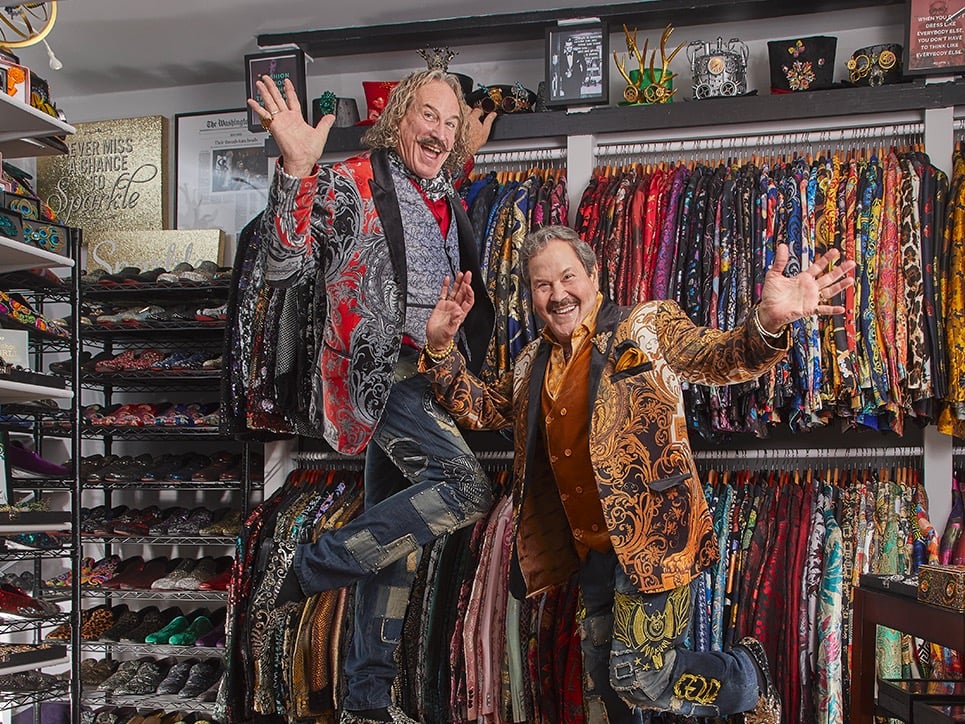The typical plastic-surgery patient looks a lot like me. She is a woman nearing 60. She isn't very wrinkled, and she feels great when other people say she doesn't look her age. But then she compares the face in the mirror to the face in old photographs. As a round-faced girl, she longed for cheekbones. She's got them now, but her cheeks seem hollow, not full. She has jowls that make her face look square.
What's surprising is that our daughters are joining the facelift ranks. Surgeons are seeing more patients in their twenties and thirties. Nobody would describe them as looking old, but the patient may be bothered by a softening jaw line or the beginnings of droopy cheeks, says Roger Friedman, a Bethesda cosmetic surgeon. The younger patient wants a subtle change, to look better but not different.
Depending on the age of the woman–most facelift patients are women–and the elasticity of her skin, the surgery, called a rhytidectomy, may be very different.
Surgeons used to look at the aging face like a wrinkled bedspread, says John William Little, clinical professor of surgery at Georgetown University and a traveling professor for the American Society of Aesthetic Plastic Surgery. Pull it tight, the theory was, and the wrinkles would disappear.
To create that taut look, surgeons developed the SMAS–or submuscular aponeurotic system–technique that is still in widespread use. The surgeon peels back the skin and pulls on the deeper layers of tissue and muscle below the skin. Excess skin is removed and wrinkles smoothed out.
Little believes there are limits to SMAS, especially for women over 60. As we age, "the face deflates, loses its stuffing," Little says. Faces begin to droop and lose fullness, creating harsh angles rather than appealing curves. The areas around the temples start to hollow, revealing the bone structure beneath the skin. As gravity makes the face flatter, the neck gets fuller.
Nobody understood the effects of aging better than Leonardo da Vinci, Little says. He uses the drawings of da Vinci and other old masters to show how facial shape changes–"the inverted cone of youth" becomes almost square. A facelift should "make the facial shape young again," Little says.
Botox, chemical peels, and other nonsurgical alternatives meant to erase lines and fill wrinkles don't do anything to counteract the effects of gravity.
Little advocates a new kind of facelift called "sculptural rejuvenation," which moves the skin, muscle, and tissue of the face vertically rather than pulling it back. Fat is redistributed from the neck and jowls into the upper face. Underlying tissue is "stacked" to move fullness from the lower face into the upper cheek area. Then excess skin is removed. Scars are hidden around the back of the ears, inside the hairline in the temple area, and under the chin. Because the skin and muscle aren't pulled, you "avoid both the flattening and unnaturalness" that have spawned a generation of too-tight faces and "the wind-tunnel look," where features were almost distorted.
Little says that in 95 percent of cases he doesn't need to add fat; the repositioned tissue and fat from the jowls creates enough fullness. This is the main difference between his procedure and that of other surgeons, most of whom inject fat into the upper face. Very thin women often need extra fat–in fact, thin women do not age as well as their chubby sisters, Little says, because there's less fat in their faces.
Cosmetic surgery is still pricey and not usually covered by insurance. Most plastic surgeons operate on an à la carte fee structure. A traditional facelift is confined to the lower third of the face and costs $8,000 to $10,000. Work on cheeks, eyelids, or mouths is billed separately. Little works on a larger canvas–from the neck to eye level–and his fees are higher; a facelift including cheeks and lower eyelids is $15,000 to $25,000. Recovery time for this extensive procedure is three to four weeks. "Most people take a month away from work and social life," Little says.
F acelift patients between 30 and 60 who have few wrinkles but want to tighten their chin line and get rid of jowls are candidates for another procedure, an "S-lift." That's a minilift with minimal scars and quicker recovery time, says DC cosmetic surgeon Steven Hopping, a professor of surgery at George Washington University Hospital. Hopping has been using the technique for the past five years. The procedure gets its name from the S shape of the scar, which is hidden in the curve of the front of the ear.
Younger patients are also candidates for liposuction of the neck, says Hopping. This can be done in conjunction with an S-lift. Liposuction won't work for older patients because just removing fat would leave loose neck skin–an even less-attractive prospect. In fact, an S-lift is not recommended for a person with serious aging in the neck and face, according to Little. Hopping agrees: He does a variation of the S-lift on older patients; because the extent of repositioning is greater, the scar is behind the ear.
Hopping uses the S-lift to counteract both gravity and atrophy by tightening and repositioning sagging muscles and tissues in the lower third of the face. Some fat may be removed from the neck and jowls, and fat is usually added to round out cheeks. "I'm using autogenous fat" (taken from the patient's own body), Hopping says.
S-lifts, like traditional facelifts, are outpatient surgery. Some surgeons have fully accredited operating rooms in their office suites. Most procedures are performed under local anesthetic or a combination of deep sedation and local anesthetic. Patients do need help from a nurse or family member for the first 24 hours, but they are usually not in great pain or distress.
One 51-year-old woman who had a facelift in her forties says she emerged from surgery wrapped like a mummy. In the following days, "I looked like someone had beaten me with a bat. I had two black eyes," she recalls. "I was out of work for a week." But she doesn't remember agonizing discomfort, and she went back for more, recently having a brow lift, her upper and lower eyelids done, and her mouth rejuvenated. After her brow lift, her forehead felt tight and somewhat numb, but that dissipated rapidly.
Another facelift patient, a psychotherapist, was seeing patients two weeks after her surgery. Her face was swollen and she wore make-up to cover the black, blue, and yellow bruising. How did her patients react? The women noticed and asked questions, she says. The men seemed not to notice at all. They just sat down and started talking about their problems. Many surgeons now prescribe arnica, an over-the-counter herb that diminishes bruising considerably.
S-lift patients are out and about a week after surgery. Standard lifts require longer recovery. An S-lift costs about $8,000.
How long will any facial surgery last? The cautious answer is seven to ten years. Genetics, smoking, and sun exposure affect the longevity of the lift. "The moment the surgery is over, you continue to age," Hopping says. However, "you will always look six to seven years younger than you would have without the surgery."
F acelifts and s-lifts concentrate on the lower third of the face. Many patients see the greatest signs of aging higher up. For these people, Friedman may suggest a procedure developed in the past ten years, a midfacelift.
A midfacelift may be done alone or in conjunction with a facelift. The surgeon works on the middle third of the face, from the mouth to eye level, including the lower eyelids. The procedure, which entails more repositioning of tissue than removal of excess skin, minimizes the vertical grooves between the nose and mouth–known as nasolabial or "marionette" lines–and eliminates the depression between the cheek and the bottom eyelid, creating a youthful contour. An incision will be made in the lower eyelid and maybe in the upper lip and inside the hairline at cheekbone level if need be. "I'm not necessarily adding volume," Friedman says. "I'm putting things back where they were before."
Some surgeons use an endoscope to perform midfacelifts. The endoscope is a thin rod with a magnifying lens and fiberoptic light that transmits images to a high-resolution monitor. The surgeon operates by watching the television screen and manipulating tiny instruments. Friedman says that he has better visibility without the endoscope. Because the instruments are tiny, the surgeon makes only tiny incisions inside the hairline near the temples and on the inside of the mouth. This lessens scarring, bleeding, and healing time, say doctors who do endoscopic lifts.
Recovery is slower for midfacelifts, Friedman says, because the surgeon is working deeper below the skin. The face may still be somewhat swollen after six weeks. "After three weeks you look great," Friedman says. "After six weeks, you look like you're going to look." A midfacelift costs about $8,000.
O ther recent refinements in plastic surgery can restore a face's youthful appearance.
"An old mouth makes an old face," says Reston plastic surgeon George Weston. Aging narrows and lengthens the top lip, imparting a stern expression, he says. At the same time, the space between nose and upper lip elongates, the corners of the mouth turn down, bracketlike wrinkles develop around the mouth, and skin loosens at the bottom of the "marionette" lines.
Weston recommends a combination of procedures to rejuvenate the mouth. A lip lift will shorten the space between the nose and the "cupid's bow" of the mouth, exposing more of the pink part of the upper lip. A corner-mouth lift literally turns a frown upside down. Weston also pinches and excises loose skin bracketing the mouth. These procedures do leave scars, but they are very faint. It's a tradeoff, he believes: "You can see tiny scars from inches away, but you have a much better appearance at conversational distance." The fee for a lip lift or a corner lift alone is $2,500. Most patients do them as part of a facelift.
Weston often also does a chemical peel or dermabrasion on wrinkles around the mouth. He injects fat into aging, thinning lips. Hopping also adds fat in the lips of virtually all of his patients, to restore the full, pouty look of youth. "Everybody needs fat in their lips," Hopping says.
Many surgeons use cheek implants in addition to facelifts to bring back fullness. And because aging can cause the tip of the nose to drop, Little says, he uses an implant sutured to the nasal septum to correct the drop as part of an overall facial rejuvenation.
Like any surgery, facial plastic surgery is not without risk. Individuals heal differently, and the healing process may not turn out as predicted. One patient reported that her face looked unbalanced until all of the swelling went down.
In rare cases, patients develop hematomas or suffer injury to a facial nerve. Although midfacelifts are done at a deeper level, "this shouldn't strike terror" in patients, Little says. Facial nerves run through the intermediate plane of facial tissue, a level not touched by the surgeon.
Perhaps the biggest risk is not getting the expected result. It is important to select a plastic surgeon whose aesthetic you share–whether you are seeking subtle changes or dramatic differences. Surgeons have albums of "before" and "after" pictures that are worth perusing. You can have consultations with several doctors before choosing one, but there may be a consultation fee.
Find out how many facelifts the doctor has done. Many plastic surgeons do more reconstructive than cosmetic surgery. Ask about board certification and about Medicare accreditation of the operating facilities the surgeon uses. It is also important that the surgeon has privileges at a nearby hospital and a plan in place to transport a patient to that hospital if necessary.
It pays to talk to other patients, too. You want to know about aftercare and the surgeon's availability even if what you need is reassurance rather than strictly medical help.
Would I do it? Until I started working on this story, I thought I was aging gracefully. Now, when I look in the mirror, I find myself pulling one cheek up to see how I'd look with an oval face again. Big difference. However, cosmetic surgeons say that if you are going to lose weight, it makes sense to do the dieting before a facelift. Weight loss shows first in the face and can leave skin looser than it was before the lift. I think I'll tackle that one first.


















